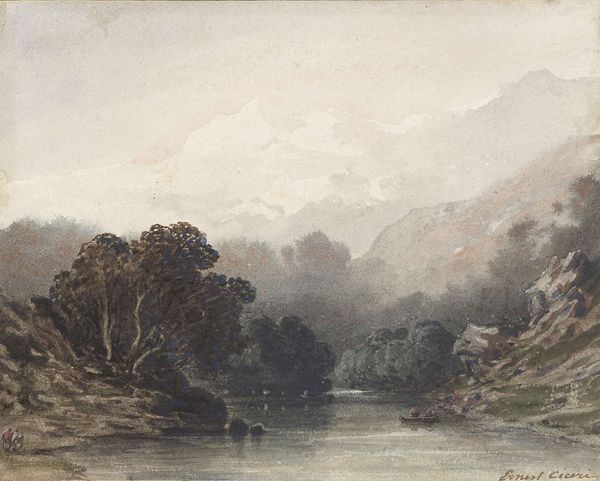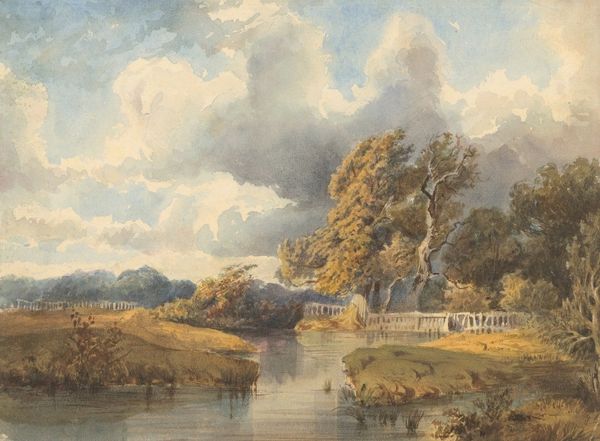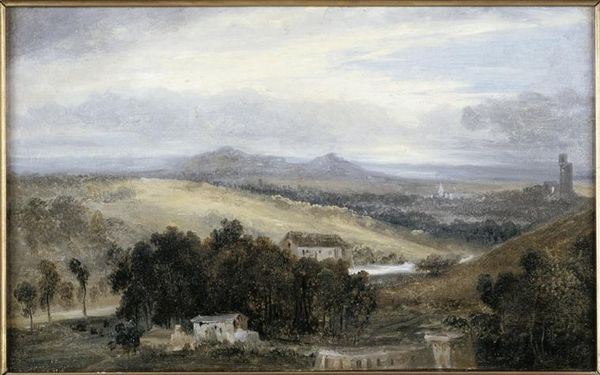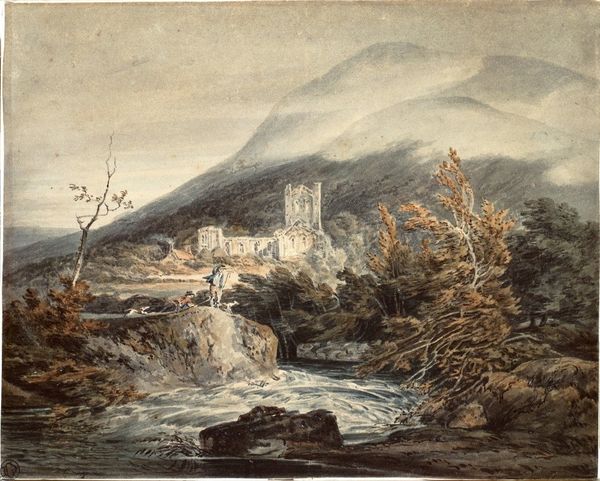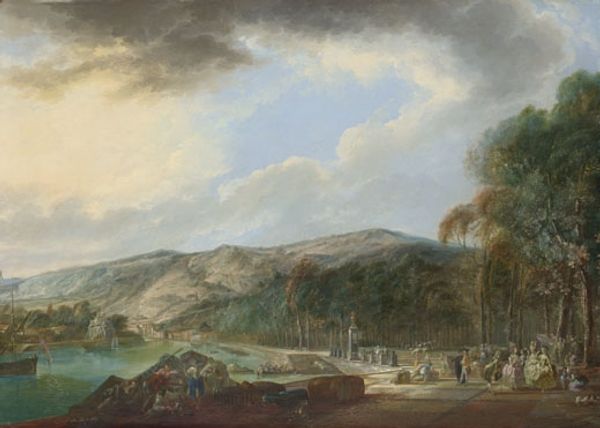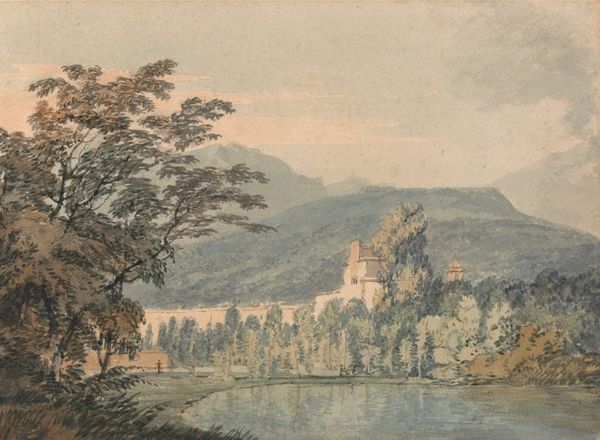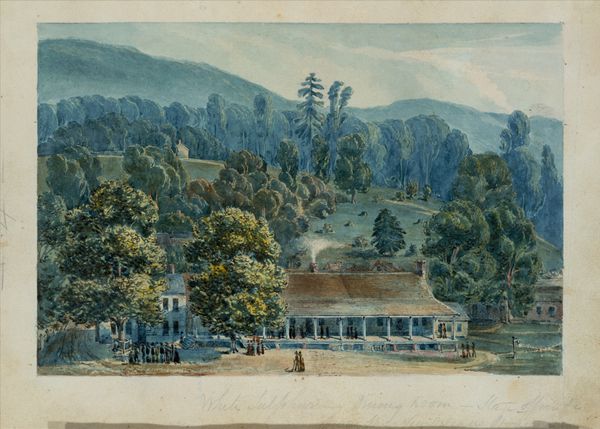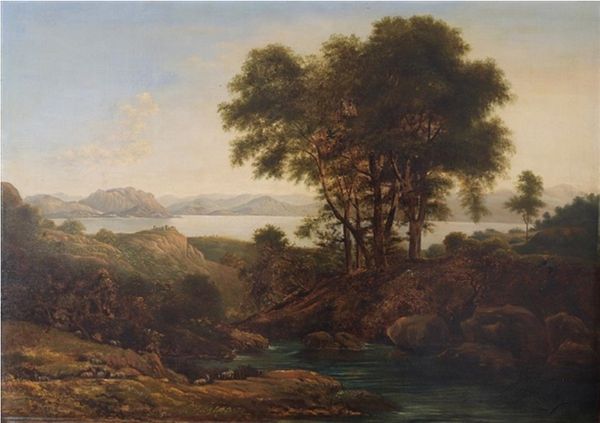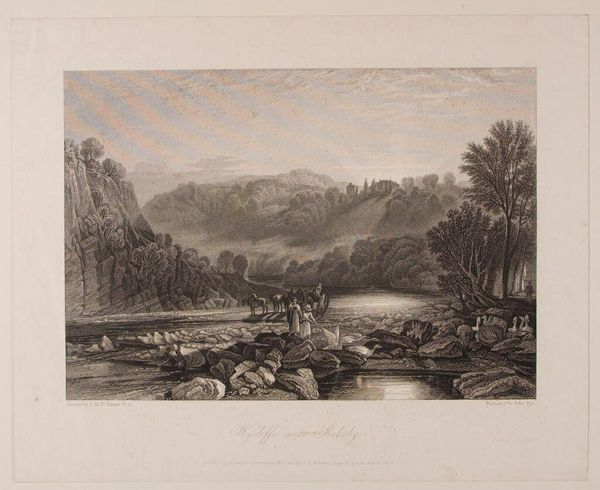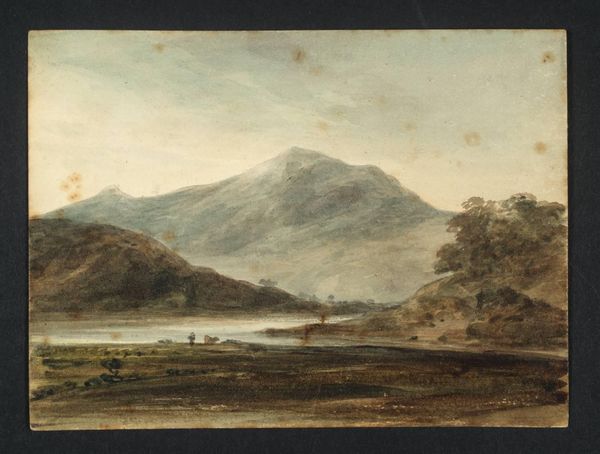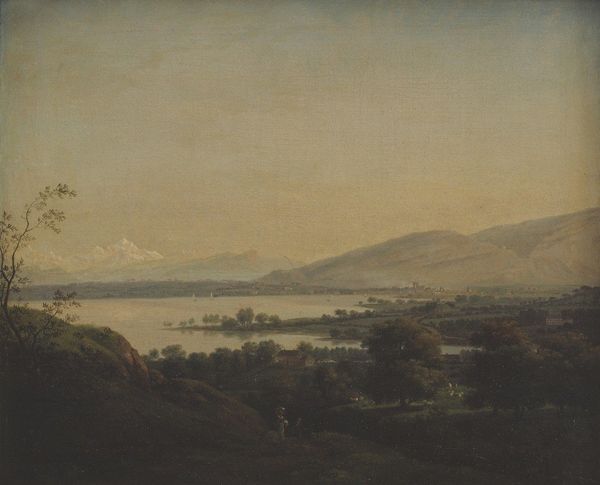
plein-air, watercolor
#
plein-air
#
landscape
#
charcoal drawing
#
watercolor
#
romanticism
#
cityscape
#
watercolour illustration
#
watercolor
Copyright: Public Domain: Artvee
Editor: So, here we have Turner's "Villa Salviati on the Arno," a watercolour and charcoal drawing from around 1796-97. The misty atmosphere creates a serene, almost dreamlike quality. What do you see in this piece beyond just a landscape? Curator: This isn't merely a picturesque scene; it’s a carefully constructed narrative that reflects the turbulent social and political climate of late 18th-century Europe. Consider Turner's position as a British artist depicting an Italian villa during a time of revolution and empire-building. The villa itself becomes a symbol – of power, privilege, and perhaps even vulnerability. Who occupied the villa, and what did it represent to the local population? These are key questions that affect our viewing experience. Editor: I hadn't thought about it that way. So the choice of the villa, and the river Arno itself, speaks to a broader historical context? Curator: Exactly! The river isn't just a body of water; it’s a conduit for trade, communication, and potential conflict. Its presence here prompts us to consider the flow of power and resources and who controls that flow. What social classes would have enjoyed leisurely boat trips? What opportunities did the river deny? Consider also the gaze: Whose perspective are we invited to share as viewers? And, by extension, whose perspective is silenced? Editor: It’s fascinating how a landscape can be loaded with so much social commentary. I guess I was initially drawn to the aesthetics. Curator: And that’s perfectly valid! But by layering a contemporary lens, particularly focusing on issues of power and representation, we gain a deeper appreciation for the complexity of Turner's work and the era he depicted. This kind of analysis invites crucial questions about visual culture and its ongoing influence. Editor: I see the landscape and its politics so differently now. It makes the work much more engaging and complex! Curator: Indeed, this is one step toward decolonizing our interpretations of visual history, making room for everyone to see themselves in these inherited artistic canons.
Comments
No comments
Be the first to comment and join the conversation on the ultimate creative platform.
